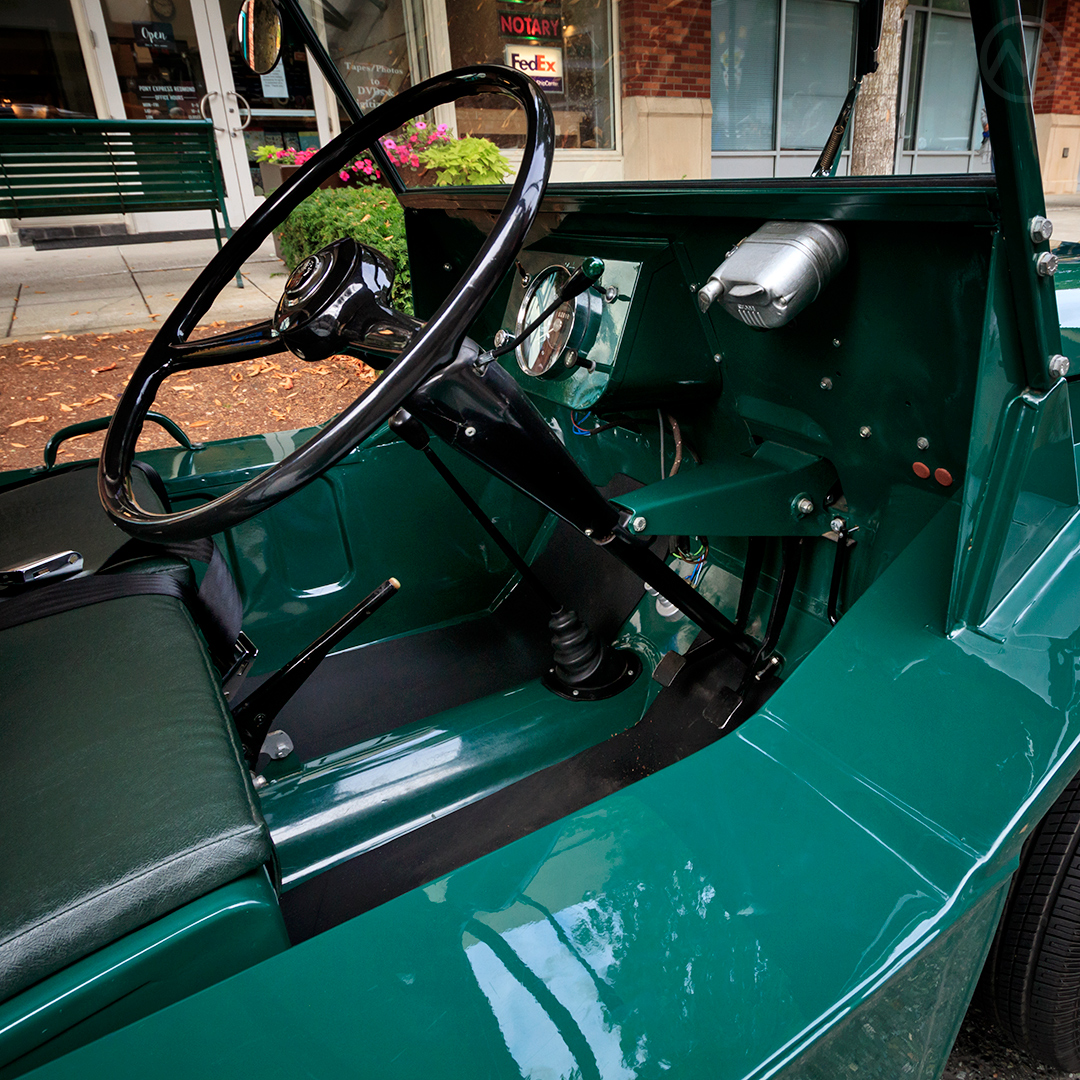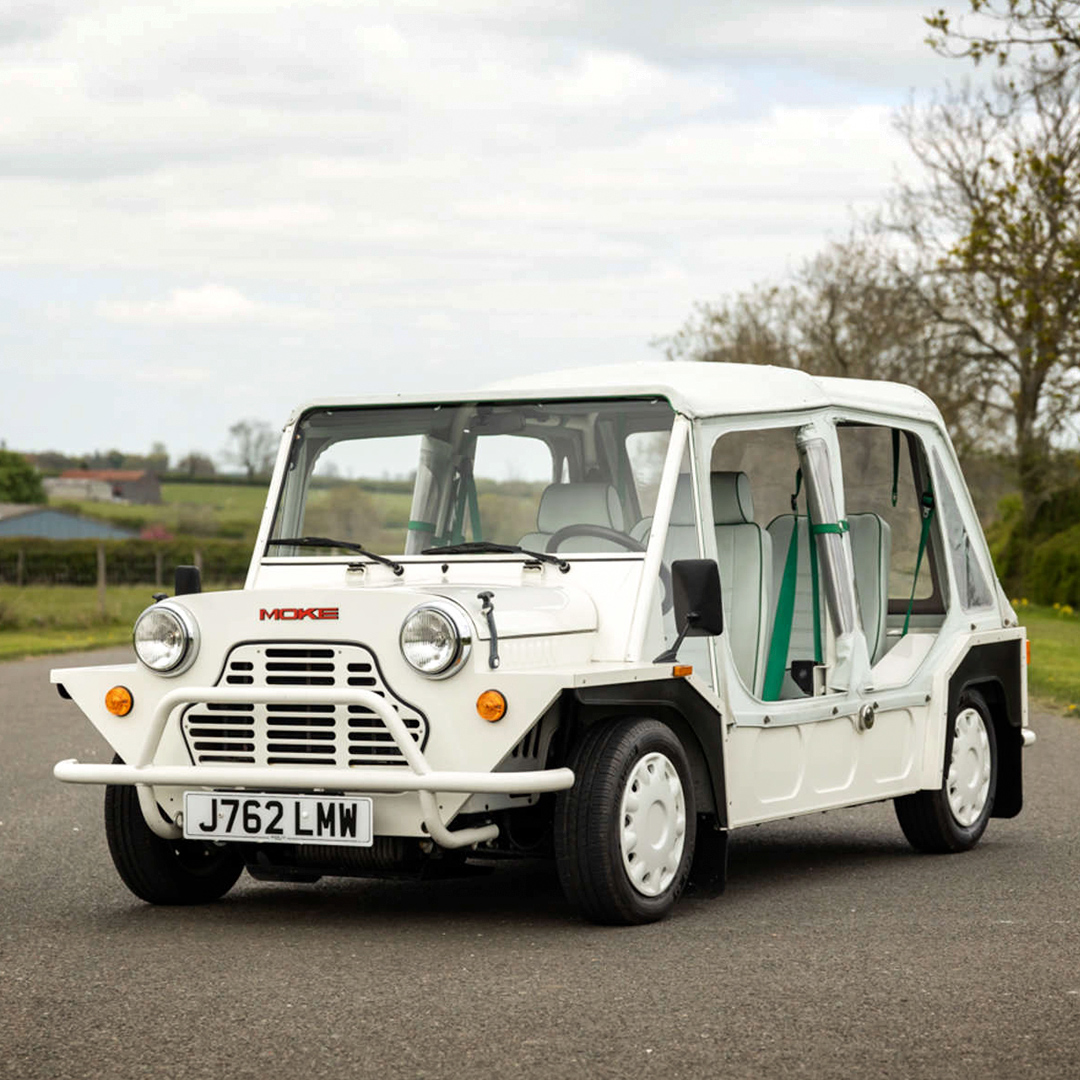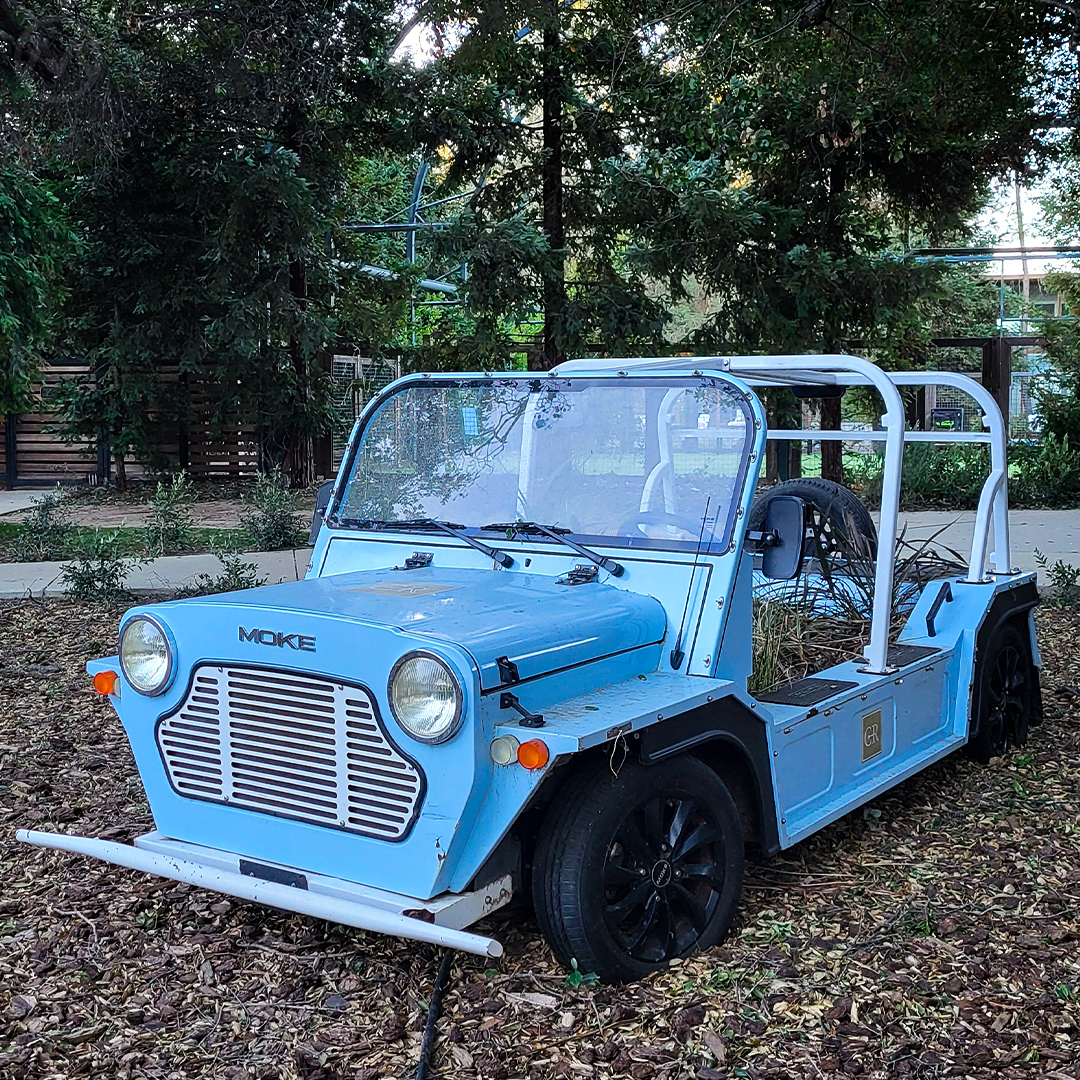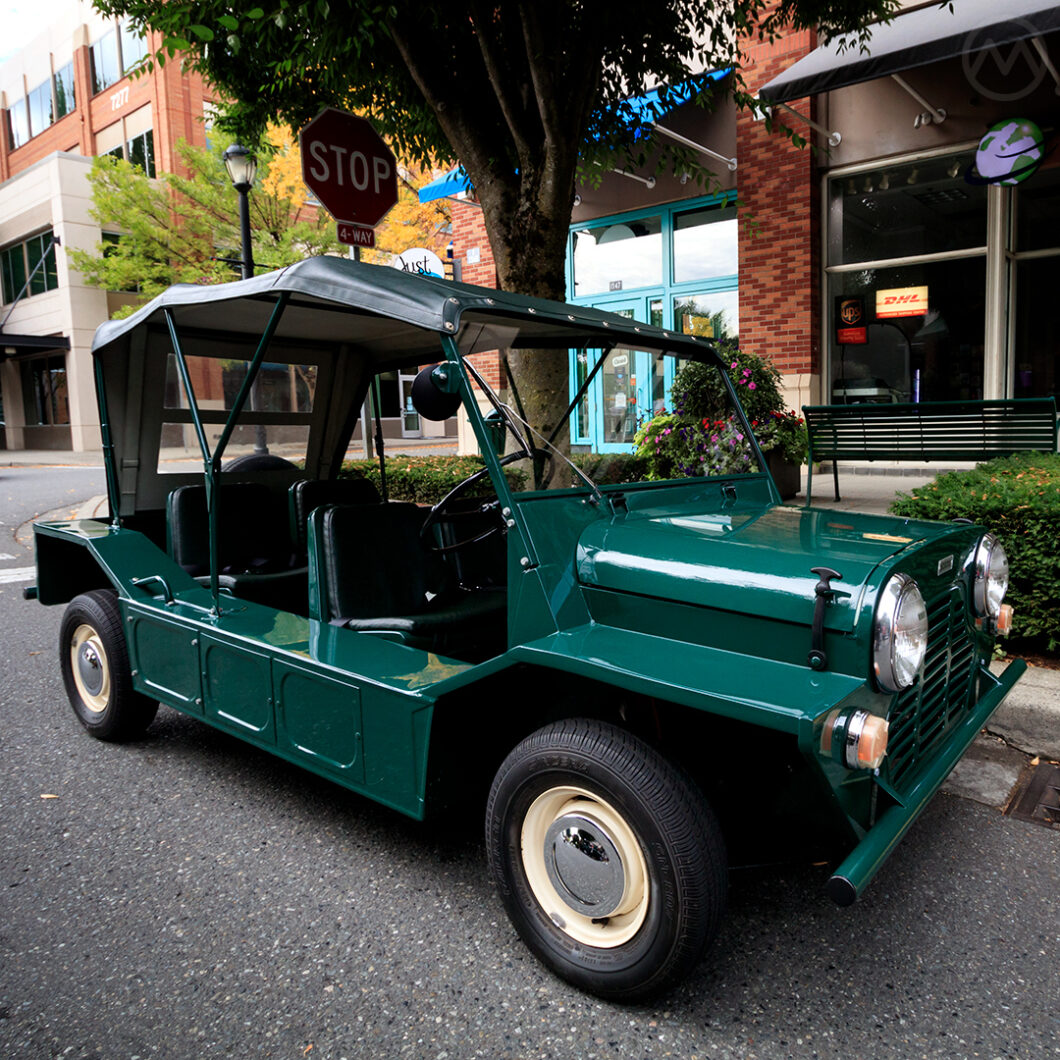For a vehicle that completely missed the mark on its original mission, the Mini Moke sure has staying power. In fact, in a sense, it’s still with us today as a modern Moke is still being made in China (and other places as a rather overpriced EV). That may seem anathema to some, but it’s sort of fitting given the Moke’s globetrotting original run, which was spread out over 29 years in three countries on opposite sides of the world.
This green machine is an early British-built Moke, one of 14,518 made at BMC’s Longbridge factory from 1964 to 1968, but the majority were made in Australia before production moved again to Portugal. After that, there was even a plan to build them in Italy, though that never did happen. It’s a convoluted tale for such a famously simple vehicle.
The Military Mini
In the beginning, Alec Issigonis and fellow engineer John Sheppard conceived the Moke as a tiny military vehicle, a miniaturized Jeep or DKW Munga. This was during the design process of the Mini itself, and the idea was a simple one. An open, rigid metal shell that used all the mechanical pieces of the parent car but which could be easily adapted for off-road purposes or perhaps as a parachute-droppable vehicle. Since the shell itself was the only totally new component, building such a vehicle was very cheap.
The problem? The prototype, internally called “Buckboard,” had very little ground clearance and remained front-wheel drive only. Early promotional materials actually showed mock soldiers picking up and carrying the vehicle across rough terrain and streams by using its tubular bumpers. The Royal Navy saw potential in its use on Carrier decks, but given that the fleet only had six carriers at the time, sales were not likely to amount to much.
Eventually, a twin-engine, four-wheel drive setup was devised, much like the Citroën 2CV Sahara. This version was shown to the public in early 1963 and demonstrated for various militaries well into 1964, but given its complexity and the continuing issues of small wheels and low ground clearance, it never went anywhere.
The Mini Moke
BMC liked the idea, though, and put the Mini Moke into production in 1964. Priced at £405 and at first offered only in one color, Spruce Green, it was remarkably simple vehicle. The Mini’s mechanical pieces were still quite sophisticated then, but the Moke was practically agricultural to look at and experience.
The shell consisted of two big box sections on either side, the left one originally housing the fuel tank, mated together by the firewall, floorpan, and a rigid east-west box section under the front seats. It was really solid, and the windshield could fold flat. Mk1 Mokes used the Mini 850 drivetrain almost completely, and the mechanical bits were bog-standard pre-Hydrolastic Mini.

If the look was agricultural, that’s because BMC originally hoped to sell it to farmers and tradespeople for utility work. The name “Moke” comes from a colloquialism for “mule,” and some American advertising for the Moke actually used text like “Own a four-passenger donkey!” with an emphasis on can-do, go-anywhere utility. The U.K., BMC had hoped to classify it as a commercial vehicle, but British Tax authorities labeled it a passenger car, which meant it was saddled with a Purchase Tax, hurting its price advantage.
Not that it mattered because the open-air Moke was singularly ill-suited to rainy Britain, hence its relatively short run at home. Note that this Mk1 Moke has just one windshield wiper, the motor for which is mounted right on the other side of the windshield as if it were 1925 instead of 1965. As a result, a huge portion of the Mokes built at Longbridge were exported, by some estimates up to 90%. It did earn some cult fame as a vehicle on “The Prisoner,” but not enough to really win a big number of buyers.
Globetrotting Mokes
The “Austin Mini Moke” was sold in the U.S. from late 1965, and BMC/Hambro marketed it pretty much the same way BMC did in Britain, with images of utility and Jeep-like capability. It wasn’t a big seller here and vanished entirely after 1968. This RHD version is a later import.
In 1966, CKD assembly began in Australia, where the Mini Moke did much better. Though not a popular item during the BMC era, British Leyland Motor Corporation of Australia (later Leyland Australia) soon figured out that marketing it as a beachy lifestyle vehicle was a much better strategy than selling it as a tiny Land Rover for farm work. The Australians also gave it larger 13-inch wheels, wider wheel arches to match, a little more suspension travel, a sump guard, and lots of other features that improved its capability.

This led to many more variations of the basic vehicle, including the very popular 1,275-cc Moke “Californian,” even though it was not sold in California despite some reported adaptations for U.S. safety regs. There was also a specific export model with some FMVSS changes. It’s possible that Leyland intended to revive the Moke in the U.S. in the early 1970s, but it never happened. Still, 30,000 Mokes rolled out of Leyland’s Zetland, and later Enfield, factories from 1966 to 1982, and from 1975 there was even a pickup truck version.
As Leyland Australia began to wind down, production was started in Portugal in 1980. After a brief overlap, that country became the Mini Moke’s home for another decade. The Portuguese Mokes were based on the Australian “Californian” but featured some updated components from the post-1980 British-built Minis, and they defaulted back to the smaller wheels and tires. About 8,500 were made before Rover Group sold the design, name, and tooling to Italian motorcycle maker Cagiva.
Some 2,071 more Mokes were made in Portugal under Cagiva into 1993 when the company made plans to move the line to Italy. Italian production never happened though, possibly because the company had overextended itself by also buying Ducati, Moto Morini, Husqvarna motorcycles, and the remains of MV Agusta. Thus ended the lengthy original run, only for the car to be revived by Chery in 2012. The “new” Moke only looks like the old one, though; it doesn’t share any parts.

The Australian arm figured out how to make the Moke a desirable beachcomber, possibly by taking some lessons from the Citroën Méhari. But even the “big wheel” Mokes were so low to the ground that they could never be as useful as the Citroën, which handily outsold the Moke by 3:1 despite being produced for only 20 years, as opposed to the Moke’s 29-year run.
The Moke is also smaller than the Méhari or the rival Renault Rodeo, inside and out. The Moke’s original seats are REALLY tiny and the big side boxes take up a lot of space. It is, however, absolutely charming. We spied this green one in 2021.

